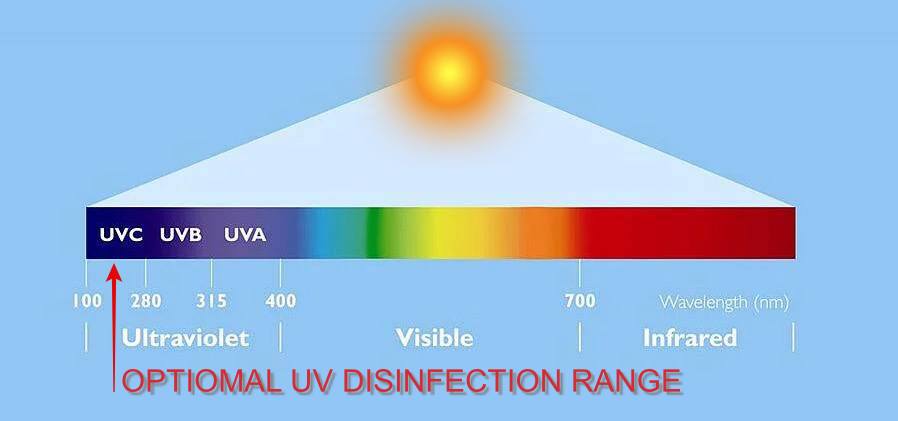UV-C Lights for Sanitizing
UV-C Lights for Sanitizing
Ultraviolet light is a type of naturally present electromagnetic radiation that is in sunlight and actually makes up approximately 10% of the total light generated by the sun. UV light is electromagnetic energy with wavelengths shorter than visible light but longer than x-rays. The wavelength of this light ranges from 10nm to 400nm and is classified into three sub-bands; UV-A (near), UV-B (middle), and UV-C (far).

UV light with wavelengths less than 290nm are considered to have “germicidal” properties (more on this later). Earth’s atmosphere absorbs ultramagnetic radiation with wavelengths less than 290nm, meaning that most of the UV-C and UV-B generated by the sun is blocked by our planet’s ozone.
Ultraviolet Light Sterilization: History
Ultraviolet (UV) light has proven effective at eliminating the threat from many well known viruses, dating as far back as 1877 when the first scientific study was recorded concluding that Ultraviolet light provided powerful sterilization properties. Further studies in the early 20th century confirmed that Ultraviolet light could prevent the spread of infections diseases, on surfaces and in the air, yet it would take many more decades for science and medicine to harness the power of Ultraviolet radiation.
With the increase of tuberculosis in the 1980’s, Ultraviolet light was once again brought to the forefront of medicine and used to combat the spread of this highly contagious and deadly infection. Ultraviolet lamps are now being used in many widespread germicidal applications to eliminate harmful pathogens in air, water and on surfaces. Even with an increase in the use of UV lamps for sterilization, there are still many environments that stand to gain a great deal and improve public health by utilizing Ultraviolet light sterilization systems.
Benefits of UV-C Technology
UV-C radiation has been proven to be effective against waterborne pathogenic microorganisms including those responsible for cholera, hepatitis, polio, typhoid, giardia, cryptosporidium and many other bacterial, viral and parasitic diseases
UV-C radiation can be used to destroy chemical contaminants such as pesticides, hormones and other pharmaceuticals in drinking water or waste water
UV-C installations have low capital and operation cost
UV-C technology is environmentally friendly
UV-C installations are easy to operate and to maintain
UV-C radiation has no harmful effect when overdosed
UV-C radiation works instantly and the effectiveness does not depend on the water temperature
UV-C disinfection is a physical process: no substances are added to the water
UV-C disinfection is complementary to Chlorine disinfection: it deactivates organisms that are resistant to Chlorine such as giardia and cryptosporidium
UV-C lamps can be easily regulated to optimise treatment for variations of water quality and for changing water flows
UVC radiation will keep the surface of reservoirs clean from biofilm
The UV-C disinfection effect is directly related to the UV dose (which is the product of intensity and exposure time of the micro-organisms) so it’s effectiveness can be simply measured once the system design is validated
For more information go to Healthcare

Comments
Post a Comment